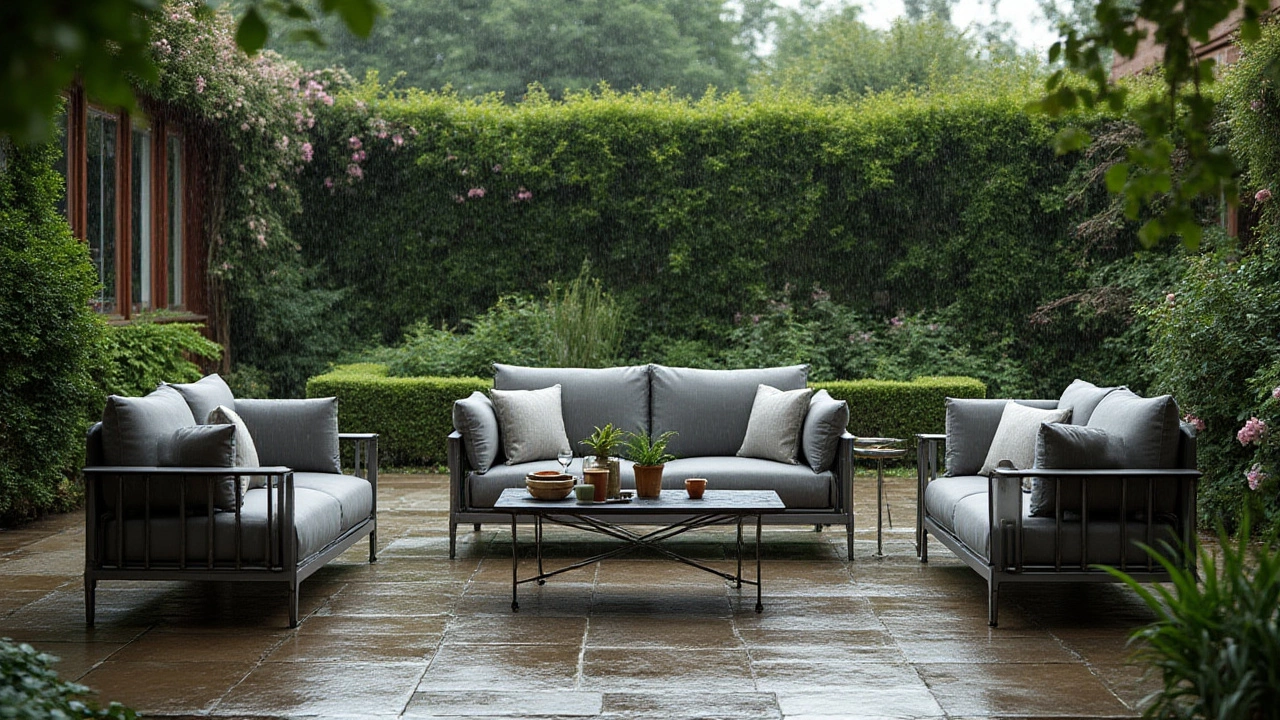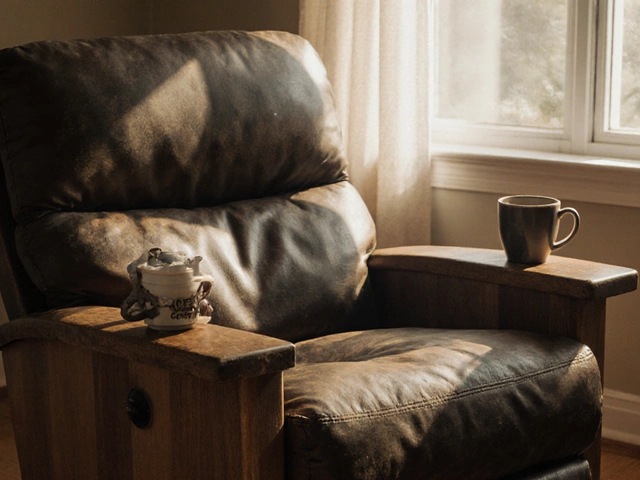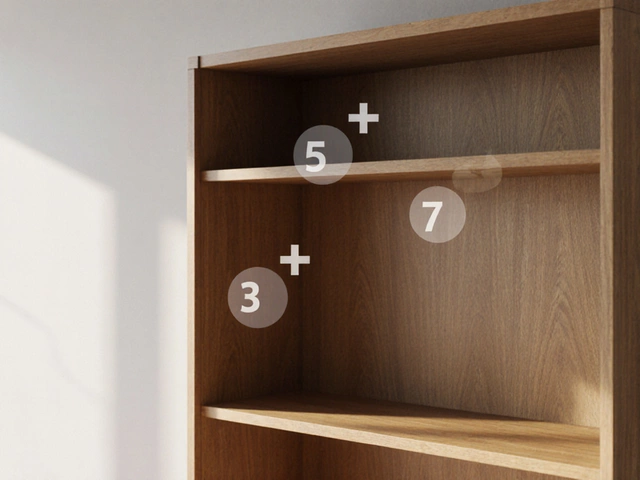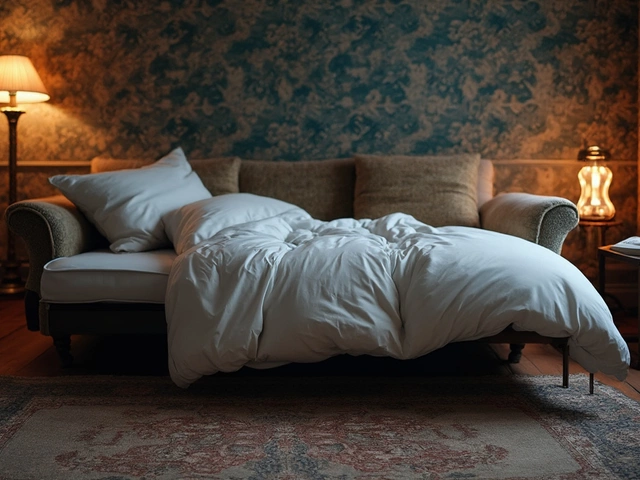Try wrecking the wrong piece of outdoor furniture and you'll realize pretty quickly: not all patio sets are built the same. Some look gorgeous through that first summer, only to collapse in the rain or start disintegrating the second you forget to cover them. Others? Those stick around so long you'll get sick of them before they ever break. The real question isn’t just “What looks good in the yard?”—it’s “What’s the most indestructible outdoor furniture out there?” There's a science to surviving in the wild: between freezing winters, blazing sun, pets with sharp teeth, wild kids, and bird droppings, only a handful of materials really make the cut. Before you drop cash (sometimes a LOT) on a new outdoor sofa or table, let’s get into what actually holds up—and what’s just hype.
What Makes Outdoor Furniture Truly Indestructible?
Here’s the thing most people miss: durability outside isn’t just about toughness. Sure, something thick and heavy might resist a few knocks. But indestructibility outdoors is a magic combo—weather resistance, rustproof construction, low maintenance, and toughness against both impacts and sun. UV rays from the sun break down plastics and fade fabrics. Water causes swelling, mold, and rust. Extreme temperatures make materials brittle, and wind? It’ll turn lightweight chairs into lawn darts. So what actually holds up?
Let's talk materials first. Teak wood is the traditional king—loaded with natural oils that shrug off rain, the sun, and even pests. Teak used on WWII battleships is still around today, gray and seasoned but not rotten. Pretty impressive for a piece of lumber. But teak’s not alone: high-density polyethylene (HDPE) plastics, powder-coated aluminum, marine-grade stainless steel, and synthetic wicker weave are heavy hitters too. Want hard data? According to furniture test labs, HDPE lumber and teak both resisted cracking, warping, and rot after 10 years outdoors, with maintenance limited to a yearly cleaning. Even better? Powder-coated aluminum frames scored highest for resisting corrosion, staying rust-free after years in salt spray chambers—way longer than cheap cast iron or steel.
But it’s not just the frame or base that matters. The fabric can make or break your outdoor gear. Sunbrella fabrics—made from solution-dyed acrylic—stand up to UV rays without fading. When outdoor furniture with Sunbrella covers was left in direct sunlight for over two years in Arizona, the colors barely shifted. Compare that to lower-grade polyester cushions that start to bleach and go thin after just one season. If you’re looking for a cheat code, always pick furniture with removable covers made of solution-dyed acrylic. That one feature triples outdoor cushion lifespan, no joke.
Now, here’s a sometimes-overlooked enemy: hardware. Bolts, screws, joints—these tend to go before the rest. So, indestructible outdoor furniture isn’t just about what you see, but what holds it together. Marine-grade stainless steel screws and connectors are more expensive but survive year-round exposure, even in coastal areas with salty air. Regular steel rusts and stains surrounding wood or plastic, weakening the whole piece. Something as boring as a bolt makes a difference. One report showed that patio sets with stainless steel hardware had lifespans at least 4 years longer on average.
Last thing for this section: design actually matters. Furniture with fewer joints or moving parts (like foldable loungers) lasts longer because there’s less to go wrong. Stuff that’s either too lightweight or made to fold up in clever ways? Those often wear out fastest. Sometimes, basic and heavy wins the durability game. Take Adirondack chairs made of HDPE—they’re chunky, impossible to tip, the wind can’t move them, and you can leave them in rain, snow, or burning heat. Years later, they’re still sitting there, waiting for you.
So, if you want the magic formula for indestructibility: look for teak or HDPE construction, marine-grade hardware, powder-coated aluminum for frames, and solution-dyed acrylic for cushions. Watch out for cheaper materials dressed up to look the part—resin wicker over powder-coated steel is worlds better than PVC over spray-painted iron.
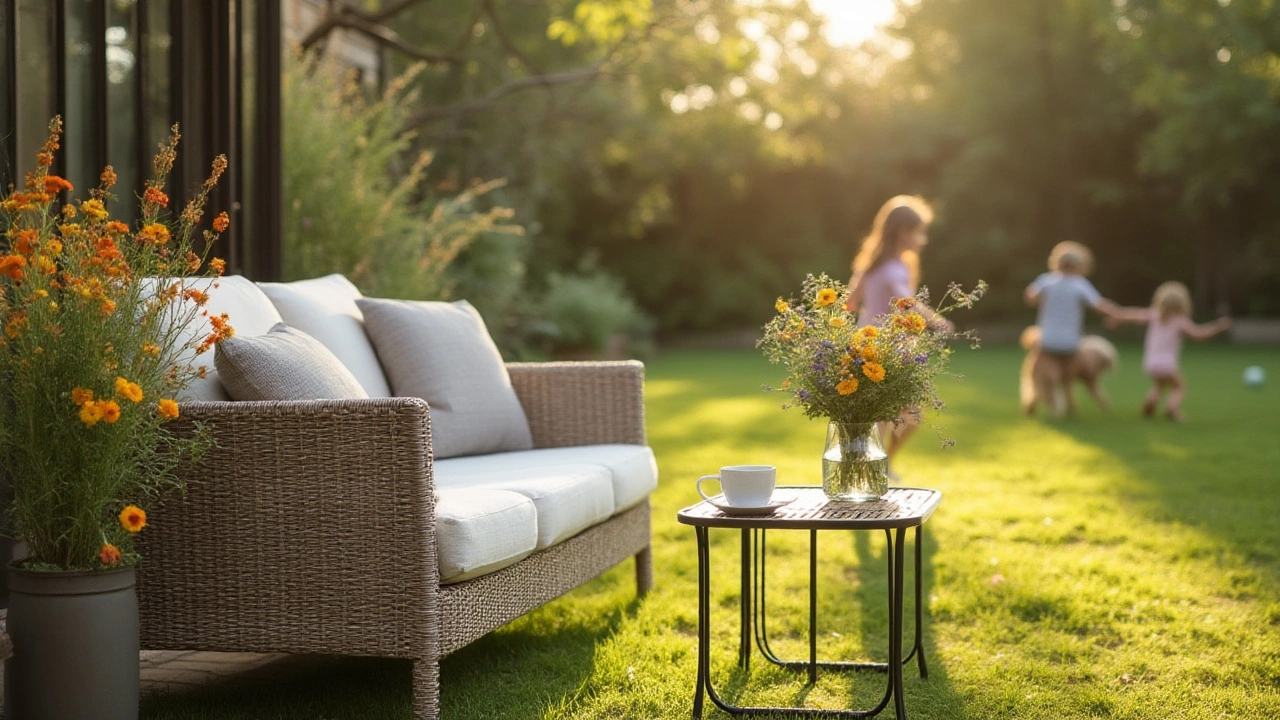
Breaking Down the Best Materials: Pros, Cons, and Hardcore Stats
Alright—now let’s really get specific. Planning to leave your furniture out in the open, never cover it, and forget about oiling or hosing it down? Only a few materials can truly handle that. Knowing exactly what each one does best (and where it flops) will help you avoid the classic trap: buying something that looks tough, only to watch it crumble after one rough winter.
Teak wood is in a league of its own, but it asks a hefty price. Fresh teak is honey brown, but it silver-grays over time if you skip oiling (which you totally can, just a matter of looks). The cool part: the natural oils in teak prevent water absorption and resist bugs. Teak patio gear can last over 75 years outdoors, even untreated—seriously, it’s that good. Here’s a tip: if you want a teak bench to stay golden, rub it with teak oil once or twice a year. Or, let it turn gray for a weathered look; it won’t hurt the wood.
HDPE (high-density polyethylene) lumber is the same stuff used in marine docks and playgrounds for a reason. It doesn’t crack, rot, or harbor mold. Plus, it’s made from recycled plastics (think milk jugs), so it’s eco-friendly. UV stabilizers inside keep the color from fading—the best brands (look at Polywood or Berlin Gardens) guarantee their stuff for 20 years or more. It cleans up with a hose. But here’s truth: HDPE furniture is heavy. You won’t want to move it every week. That's a fair tradeoff for never worrying about rust, stains, painting, or splinters.
If you like sleek lines and want something lighter, powder-coated aluminum is your guy. Aluminum itself doesn’t rust since it forms a protective oxide layer. Add powder coating and it resists scratches, chips, and stains—making it an all-star for frames and table legs. Real world test: after leaving powder-coated aluminum chairs outside on a Florida patio for five years (heat, humidity, rain galore), there was zero structural rust—just a little dust to wipe off. The only negative? High winds can send lightweight aluminum furniture flying, so choose heavier pieces or secure them in exposed spots.
Stainless steel (especially marine-grade 316) resists corrosion due to added molybdenum. Standard stainless works in most climates but will pit and rust near oceans unless you get the marine grade. Maintenance? Just wash off salt and dirt every couple of months. Pro tip: go with a brushed rather than polished finish to hide fingerprints and watermarks.
Synthetic/resin wicker has a bad rap thanks to flimsy knock-offs. But good resin wicker (HDPE-based) over a solid aluminum frame doesn’t splinter, fade, or unravel—unlike natural wicker, which only survives inside. Make sure to double-check what’s under the weave: if it’s steel, skip it (steel rusts quickly). Quality resin wicker patio sets last well over a decade in stormy, humid places where you’d never risk a wood chair.
Now, for fabrics. Here’s a quick data snapshot:
| Fabric Type | UV Resistance (Years until Fading) | Mold/Mildew Resistance | Washability |
|---|---|---|---|
| Sunbrella (Solution-dyed acrylic) | 5-10 | Excellent | Machine/Hand |
| Spun Polyester | 1-2 | Good | Hand |
| Olefin | 2-5 | Very Good | Machine |
| Cotton (Outdoor treated) | <1 | Okay | Hand |
If you hate swapping cushions, just pick up Sunbrella or another solution-dyed fabric. It’s not hype; numbers actually back it up. There are outdoor upholstery sets passed down in families that look nearly new decades later.
What about stone and concrete? Surprisingly, cast concrete furniture is practically vandal-proof, and stone benches never rot or rust, but watch your shins—it's not exactly comfy. Concrete or stone tables are beasts at resisting hailstones, heavy rains, or rowdy parties, though you’ll need friends (or a small crane) to move them.
Quick hits for indestructibility:
- HDPE/poly lumber: Moldproof, easy to clean, heavy-duty, pricey but lasts through a lifetime of summers and snow.
- Teak: Classy, can go totally maintenance-free (it’s just silver, not brown).
- Aluminum: Powder-coated lasts a decade-plus, super light, great for modern patios, and doesn’t rust.
- Marine-grade stainless steel: Use this hardware or frame only, costs more, but zero worries for life near the coast.
- Resin wicker: Only buy with aluminum or HDPE core—no steel inside.
Stay away from pine, untreated steel, and cheap PVC plastic. Those fade, rust, crack, or split within one or two seasons, even if you’re careful. And if comfort is a deal-breaker, pair your tough-as-nails frames with high-quality, water-resistant cushions.
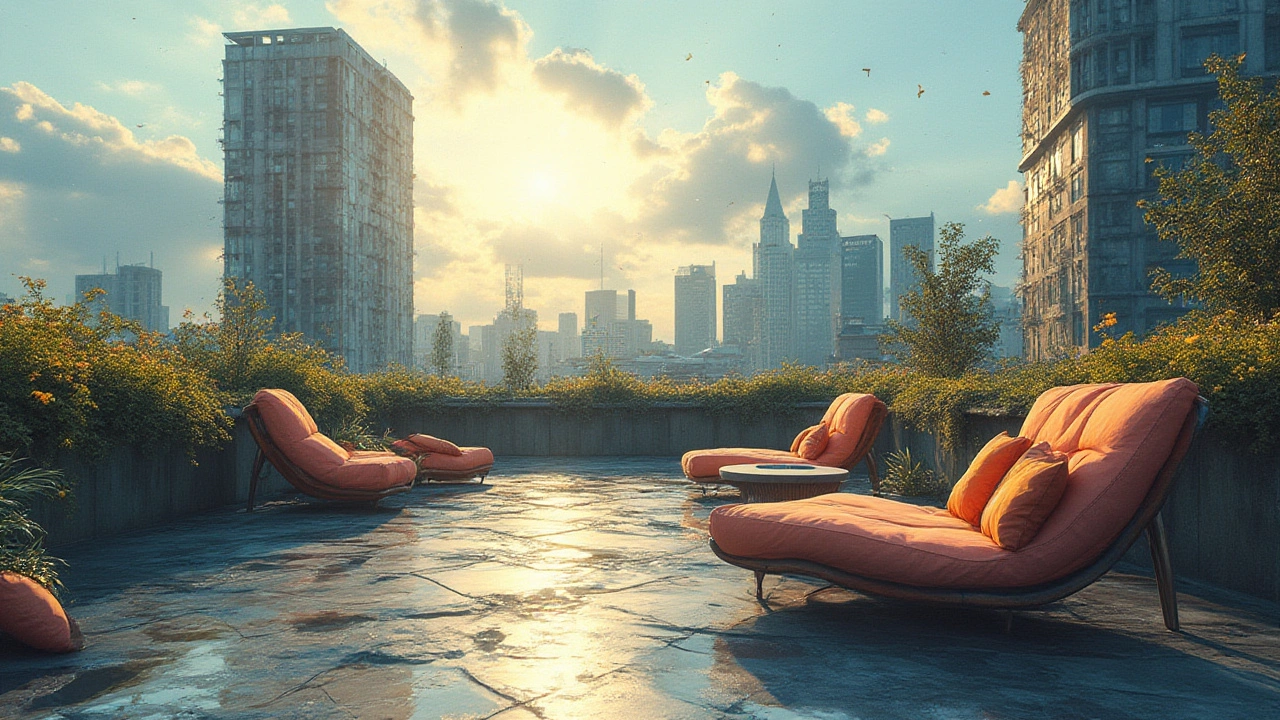
Smart Shopping: Tips, Myths, and How to Max Out Lifespan
You can spot sturdy outdoor furniture a mile away once you know what you’re looking for. Not everyone has a fat wallet, though, so let’s get smart—how do you pick the toughest stuff without getting taken for a ride? Check for clear labeling about materials (not just ‘wicker’ or ‘metal’ but specifying HDPE, teak, powder-coated aluminum, etc.). If a retailer dodges specific details, that’s usually a warning sign.
Weight Test—don’t ignore it. Pick up a chair or lean into a table. Cheap plastic and hollow steel feel light and rickety. Solid teak, aluminum, and HDPE take effort to move and don’t wobble—no mystery why that’s true, they’re denser and built to stick around. More weight usually means more stability, especially in windy spots.
Joints and fasteners are the hidden weak spots. Take a second to look where legs attach or arms bolt on. Are screws exposed or protected? Do fittings jiggle or shift when you push down? Stainless steel bolts tucked inside the frame mean someone thought about water intrusion—and that makes furniture last years longer. Loose or poorly protected hardware rusts quickly and can’t always be replaced with a trip to the hardware store.
Finish and Paint. Anything with a powder-coated finish (not spray paint) resists chips and scratches 2-3 times longer—and those surface coatings keep corrosion at bay. There's a famous story in the outdoor manufacturing world: after category 4 hurricanes, the only furniture still salvageable was powder-coated or solid teak/HDPE. Wood with standard paint or varnish peeled and fell apart.
Cleaning matters. Nothing lasts if it’s buried under mold, standing water, or bird mess. Indestructible doesn’t mean zero care. Give everything a gentle wash in spring and late summer. Wiping down cushions before storing for the winter (even just tossing in a deck box or garage) adds several years. And don’t forget: Sunbrella and similar covers can be unzipped and tossed into the washing machine. That trick alone prevents permanent stains and keeps the fabric strong.
Don’t fall for the myth that all metal is strong outdoors—it’s not just about looks. Low-cost (hollow tube) steel frames might seem solid, but they rust fast unless you live somewhere bone dry. If you’re stuck buying from a budget brand, look for at least rust-inhibiting finishes, or better, pivot to HDPE or hard recycled plastic, since it won’t ever corrode or splinter.
Want an extra edge on longevity? After-market weather covers are a cheap insurance policy, but pick ones that are breathable to prevent trapped moisture. And if you hate fussing with covers, make sure your furniture has built-in drainage holes in seats and cushions; it’s a big help after unexpected downpours.
If you want to get creative, you can always combine indestructible materials. There are stunning patio tables with solid teak tops and powder-coated aluminum legs; they turn heads and easily handle the worst weather. Mix-and-match can look really sharp while being stubbornly durable.
Heard the old timer’s saying: “Buy it once, cry once”? It's true with patio furniture. The upfront price looks steep for the good stuff, but it’ll outlive every can of paint, pressure washer burst, or cheap cover you throw at it. That, and you won’t have to buy a new set after every thunderstorm or barbecue incident gone wrong. Just picture yourself chilling on that same rock-solid HDPE chair year after year, the sun burning away above, but your outdoor hangout never giving in.
A quick recap before you head out furniture shopping: prioritize solid materials, check for high-grade hardware, and avoid anything that feels overly light or uses hidden steel parts. For most folks, HDPE and teak are the MVPs of indestructible furniture, with aluminum and marine stainless giving standout backup. Dress things up with water- and UV-proof cushions, and don't skimp on an occasional cleaning to max out your investment. One last word: when you find that bulletproof patio set, you’ll know—you’ll just never have to buy another.
